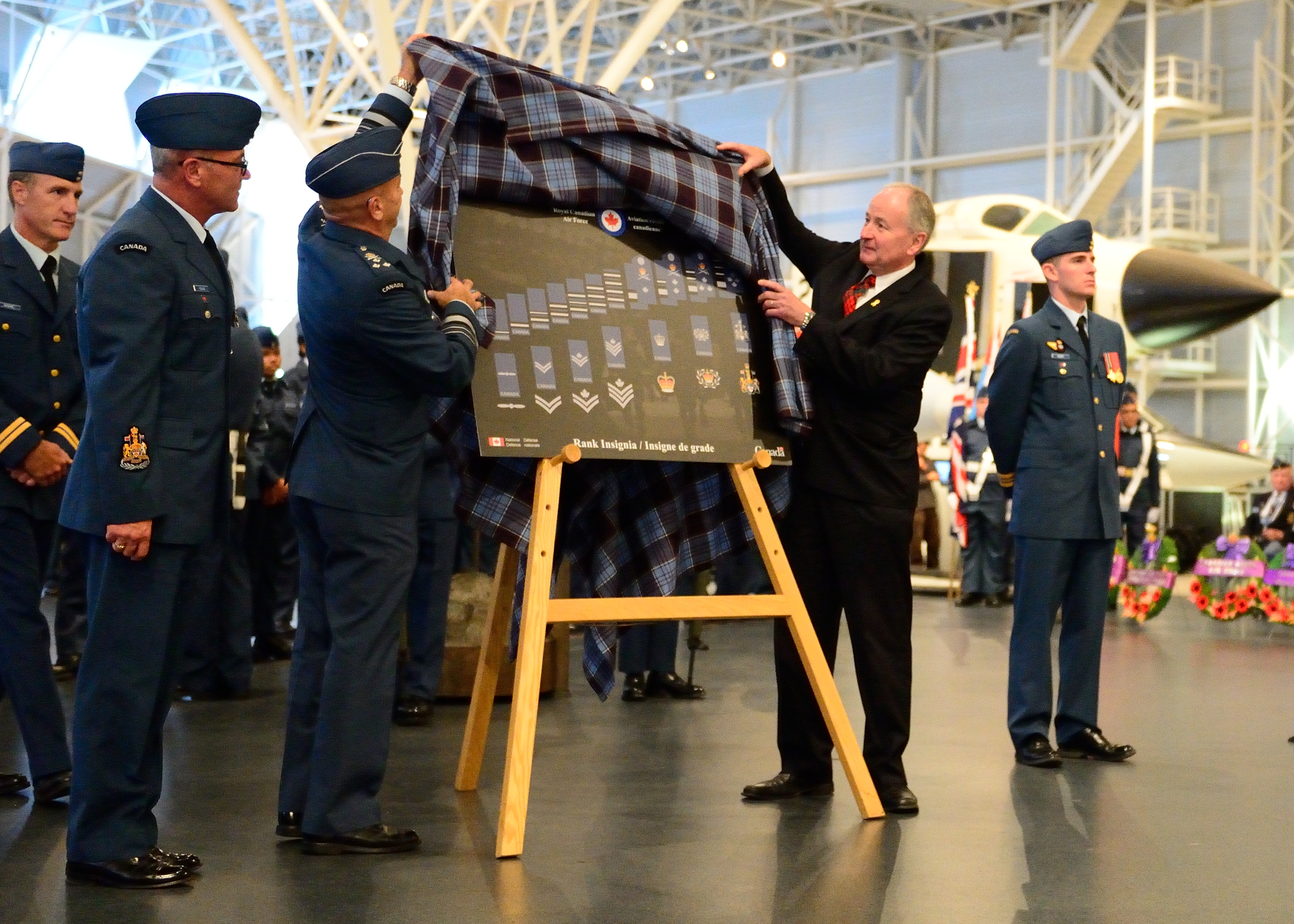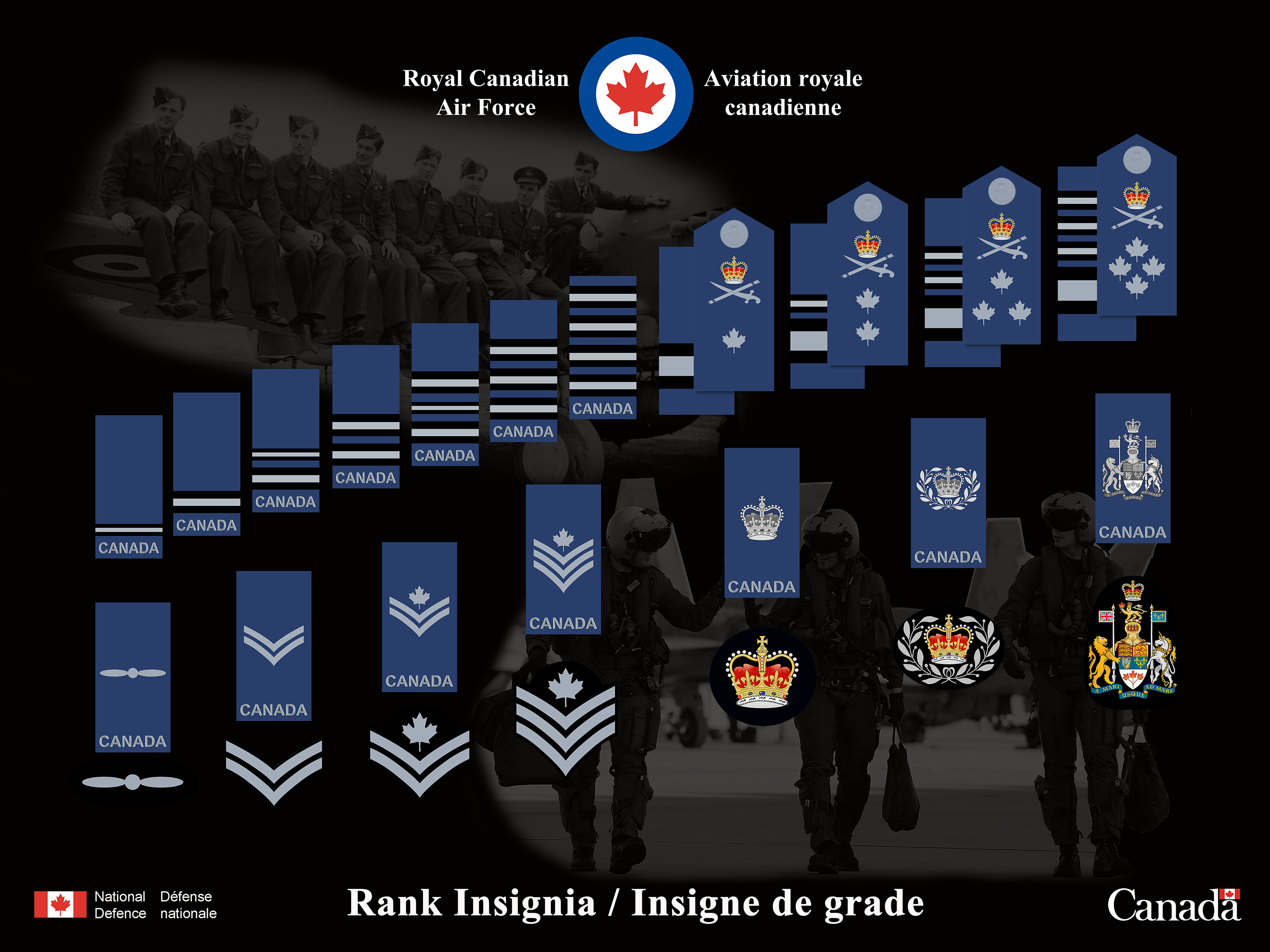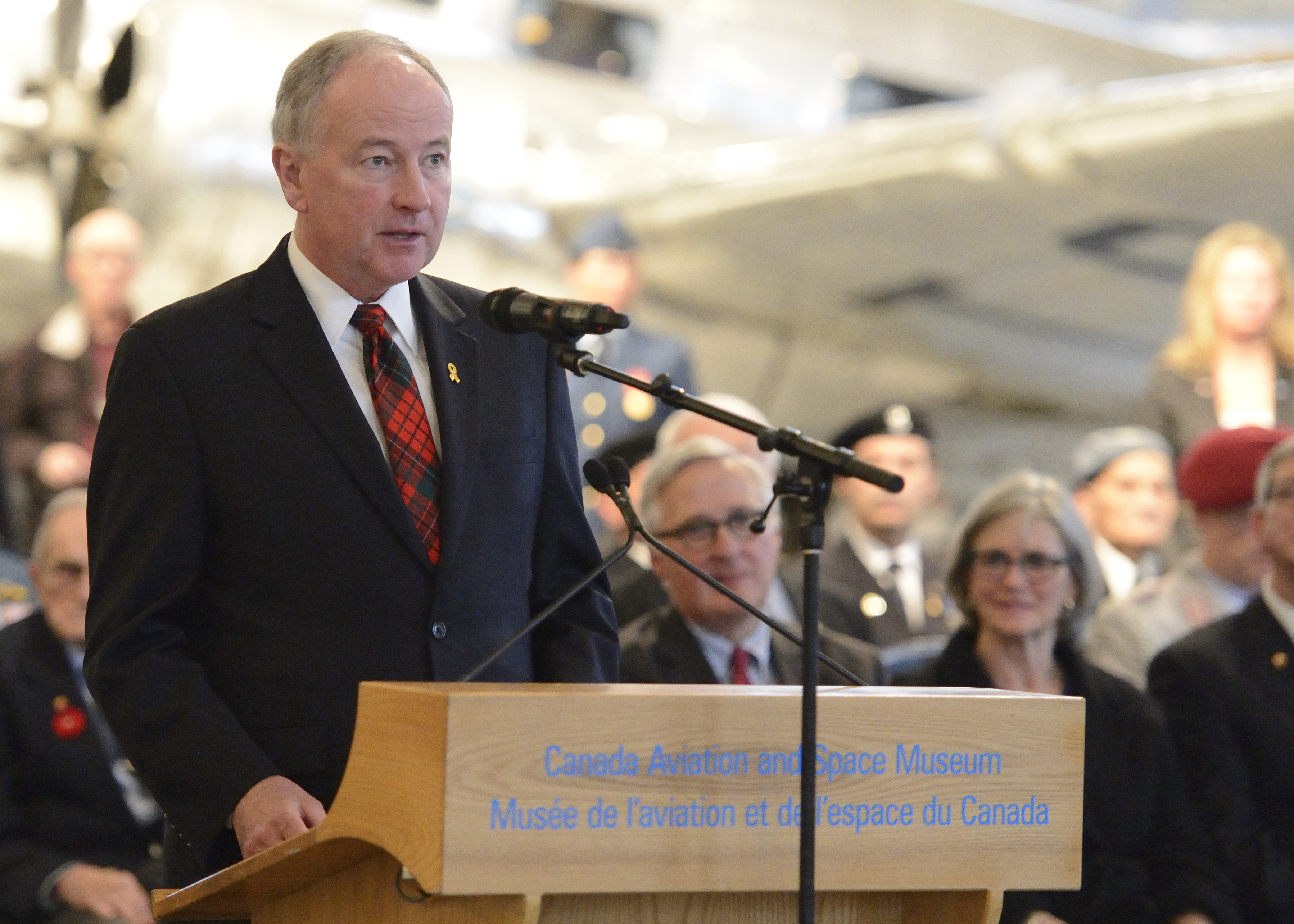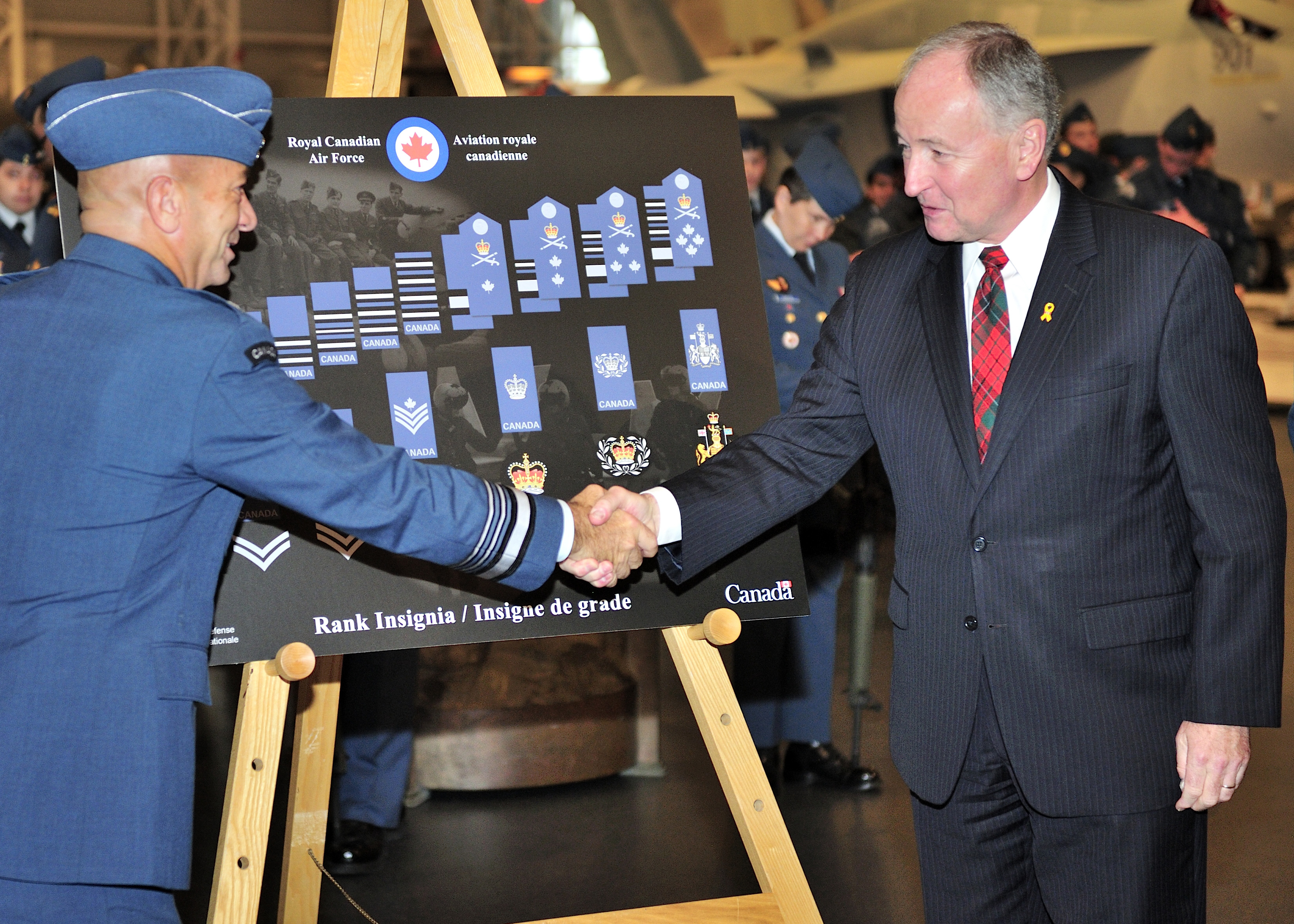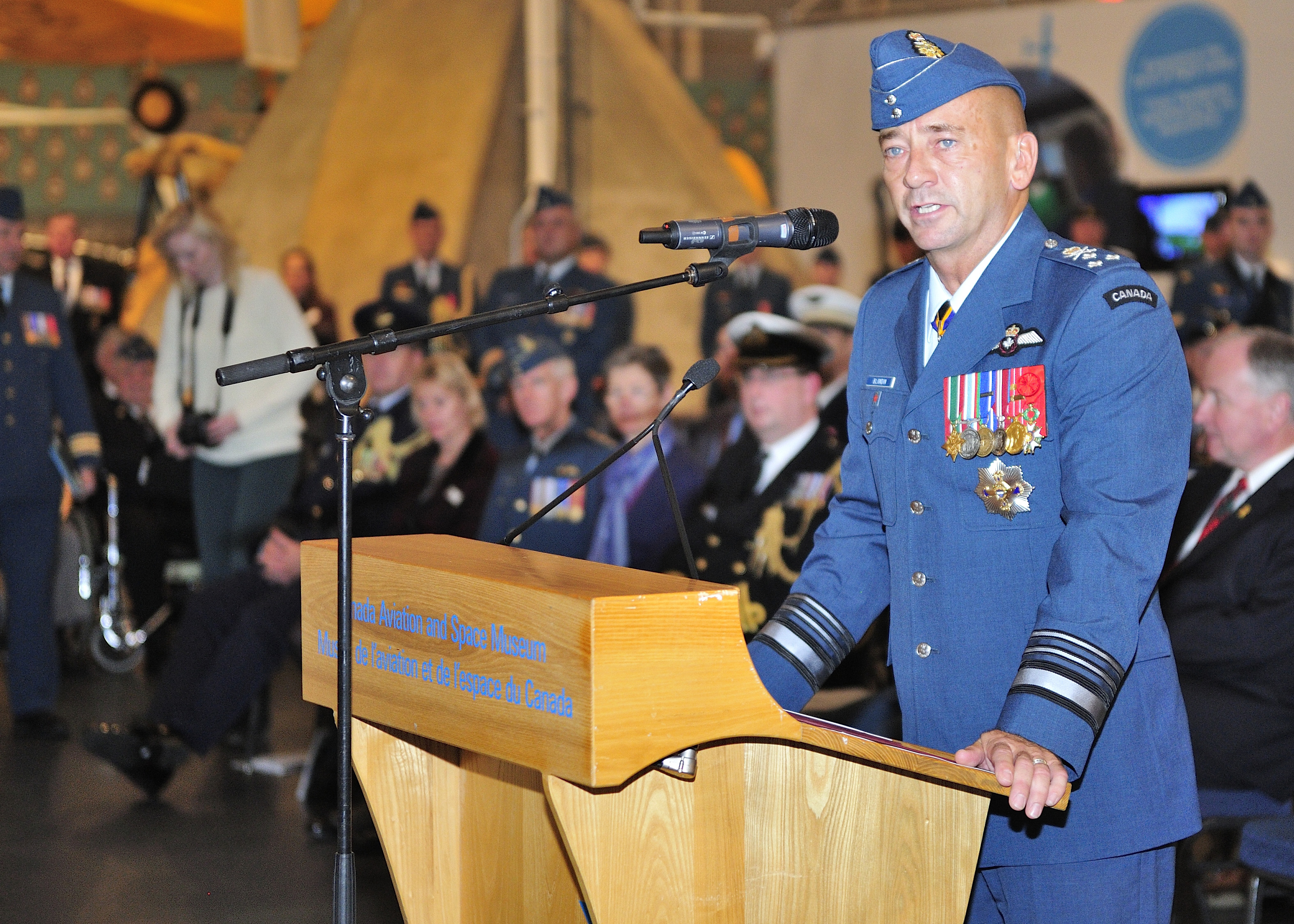RCAF receives new rank insignia
News Article / September 25, 2014
By RCAF Public Affairs
Royal Canadian Air Force (RCAF) personnel and veterans, their families, and members of the public got a preview of the RCAF’s new rank insignia September 21, 2014, during the Battle of Britain Ceremony held at the Canada Aviation and Space Museum in Ottawa, Ontario.
Minister of National Defence Rob Nicholson and Commander RCAF Lieutenant-General Yvan Blondin unveiled the new rank insignia and spoke about the importance of this link to the RCAF’s history and heritage.
“This is the next logical step for the Air Force,” Minister Nicholson said. “Military service espouses values that bind us to the past, the honour and tradition from the very foundation of our success. Yet, as an organization, we must forge ahead, and the changes announced today herald the future of the Air Force.”
In 1968, the Air Force, Navy and Army went through a unification process that saw them adopt a common uniform and serve Canada as the Canadian Forces.
While the new RCAF uniforms hark back to pre-1968, before unification shelved many of the traditional elements of the RCAF look, they retain modern components -- such as the iconic maple leaf – and terminology familiar to current RCAF members. The insignia for most ranks will be familiar as the symbols that air force personnel have worn for nearly half a century.
Non-commissioned RCAF members will have a new rank name in their cadre: the rank of “Private” will now be “Aviator”. This gender-neutral rank name, almost identical in English and French, harks back to “aviateur”, which in English was “aircraftman” or “aircraftwoman”. Aviators will wear a pearl-grey propeller on their uniform sleeve, also a step back to the historical insignia for this rank.
All other rank names will remain the same.
“I’m proud today,” said Lieutenant-General Blondin. “We have forged a new identity in the last 10 years through operational commitment, through operational excellence, through daring. When this government gave us back the name a couple of years back, it put a name to this new identity. It linked us to the past. I’m proud of wearing this new uniform.”
All officers will retain current rank names, which are similar to the ranks used in the Royal Flying Corps during the First World War. In the past, the officers wore blue rank insignia and the non-commissioned members wore pearl-grey; now, officers’ rank insignia will also be pearl-grey, reflecting the RCAF’s emphasis on “one team – one mission”.
Before unification, RCAF general officers wore rank insignia only on their tunic sleeves. The new design will retain the insignia currently embroidered on tunic shoulder straps/shoulder slip-ons, and display the Canadian maple leaf. The design of general officers’ sleeve insignia will be modified to echo the design of the historical sleeve insignia for general officers, and will be edged in black, similar to the historical sleeve insignia.
The gold embroidery on the general officers’ wedge cap will be replaced with pearl-grey piping.
The new insignia will also see the colour of all curved national badges to be worn at the top of the tunic sleeve change to pearl-grey. These badges will comprise the RCAF eagle and the word “CANADA” for non-commissioned members, and the word “CANADA” for officers and chief warrant officers. The style will be similar to the modern national badges, but will be created in pearl-grey. The word “CANADA” that appears on dress shirt slip-ons and on certain garments such as topcoats will also be embroidered in pearl-grey.
While new silver-toned uniform buttons will match the pearl-grey rank insignia, their design will remain unchanged, and include the Crown, RCAF eagle, and the word “CANADA”.
The Canadian maple leaf, which air force personnel have worn with pride for 46 years, will continue to be displayed on the rank insignia of master corporals, sergeants, and general officers. Chief warrant officers’ insignia will continue to display the Canadian coat of arms.
The rank insignia will now be pearl-grey.
“These changes unite us with our history, but also maintain a distinct Canadian identity,” said Minister Nicholson. “In the Canadian Armed Forces, uniforms mark our affiliation, strengthen our sense of belonging, and help create a service identity within a broader family. The new rank insignia represent both the history and traditions of the Royal Canadian Air Force, and the strong reputation and renown of the present.”
The RCAF badge, which recalls the pre-unification RCAF badge showing an eagle with its wings outstretched, was created following the restoration of the historical name “Royal Canadian Air Force” in 2012. This will remain unchanged as the official badge of the RCAF.
The motto will remain Sic Itur Ad Astra – Such is the pathway to the stars – which has been the air force motto since 1975. This is the motto adopted by the very first Canadian Air Force, which was first established in 1920.
There will be no changes to RCAF organizational structures or the names of subordinate headquarters and organizations.
